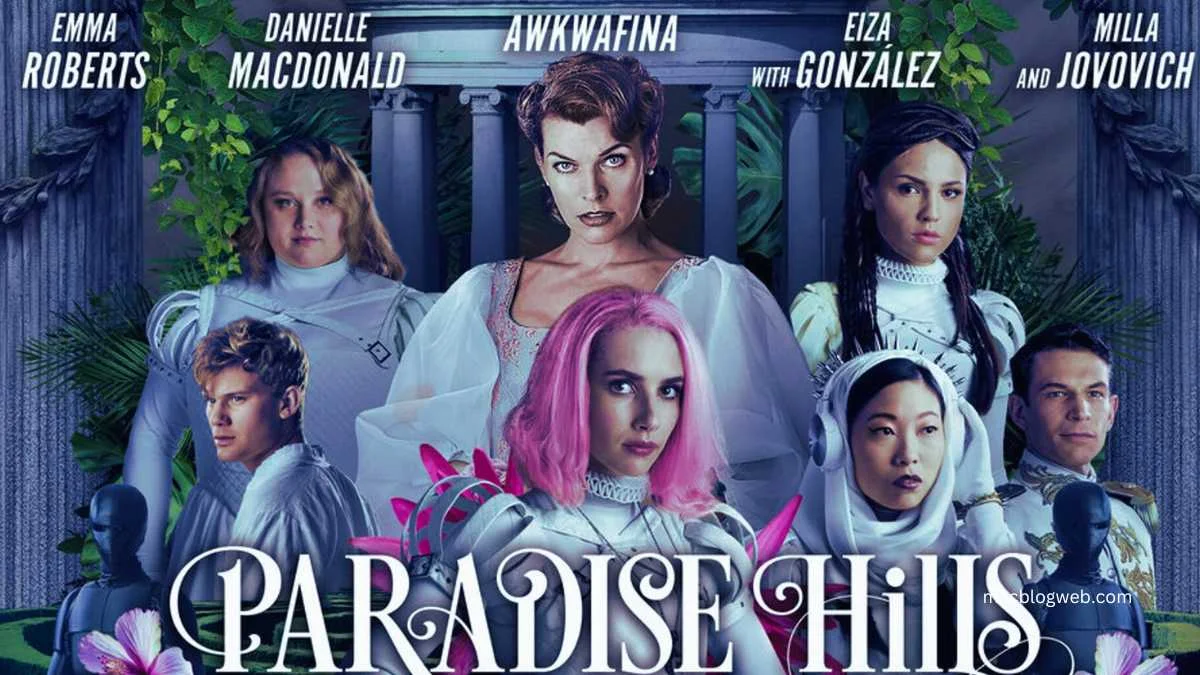“Paradise Hills” is a 2019 Spanish science fantasy thriller film that marks the directorial debut of Alice Waddington. The film explores themes of conformity, resistance, and the struggle for identity within a visually stunning and mysterious setting. Starring Emma Roberts in the lead role of Uma, the film delves into the dystopian world of a behavioral modification center designed for women who have not conformed to the societal expectations set by their families. This in-depth article examines the film’s narrative, visual style, themes, and its reception, offering a comprehensive look at this intriguing cinematic piece.
Overview of “Paradise Hills”
The film is set in a luxurious but sinister facility called Paradise, located on a secluded island. The center is designed to reform rebellious young women into ideal versions of themselves, as defined by their families and society. Uma wakes up at Paradise with no memory of her consent to the treatment, finding herself among other young women, including the characters played by Danielle Macdonald and Awkwafina, who are all in similar predicaments.
As the narrative unfolds, the dark secrets of the island begin to surface, and Uma and her friends must uncover the truth behind the facility’s true purpose. They come across a series of challenges that test their strength, solidarity, and resolve to escape the clutches of the island’s enigmatic overseer, played by Milla Jovovich.
Themes and Interpretations
“Paradise Hills” offers a rich tapestry of themes, focusing primarily on the concept of identity and autonomy. The facility’s aim to strip women of their individuality and reshape them according to a homogenized ideal reflects broader societal pressures on conformity and the perfectionist standards imposed on women. The film critiques these societal norms and showcases the protagonists’ journey towards self-discovery and emancipation.
Another significant theme is the dichotomy between appearance and reality. The idyllic and serene appearance of Paradise contrasts sharply with the sinister motivations it harbors, serving as a metaphor for the deceptive facades maintained by societal institutions that aim to control and manipulate.
The struggle for power and control is a recurrent motif throughout the film. The characters’ fight against the oppressive regime of the facility mirrors larger battles against patriarchal structures that seek to define and limit women’s roles and identities.
Visual and Cinematic Style
Alice Waddington’s background in fashion photography is evident in the film’s meticulous and stylized aesthetic. The art direction and production design of “Paradise Hills” are remarkable, featuring lush landscapes, extravagant costumes, and elaborate sets that combine elements of both futuristic and classical design. This visual richness serves to enhance the thematic depth of the film, creating a surreal and otherworldly atmosphere that blurs the lines between fantasy and reality.
The use of color in the film is particularly noteworthy, with a palette that shifts from soft, ethereal tones to more vibrant and jarring hues, reflecting the transition from the illusion of paradise to the disturbing reality underneath.
Critical Reception and Impact
“Paradise Hills” premiered at the Sundance Film Festival on January 26, 2019, where it received mixed reviews. Critics praised the film’s ambitious scope and visual flair but noted that the narrative sometimes struggled to keep pace with its aesthetic achievements. The performances, particularly those of Emma Roberts and Milla Jovovich, were highlighted as strong points.
Although “Paradise Hills” received mixed reviews, it has been praised for its bold exploration of feminist themes and its impact on the dystopian cinema genre. The film’s unique style and thought-provoking narrative have sparked discussions among critics and cinephiles alike.
Conclusion
“Paradise Hills” is a visually captivating and thematically rich film that marks a promising start to Alice Waddington’s career in feature filmmaking. While it navigates complex themes of identity, autonomy, and societal expectation with varying degrees of success, its ambitious vision and distinctive style make it a noteworthy entry in contemporary science fiction and fantasy cinema. The film not only provides entertainment but also invites viewers to reflect on the deeper questions of conformity, control, and the cost of perfection in a society that increasingly values surface over substance.








